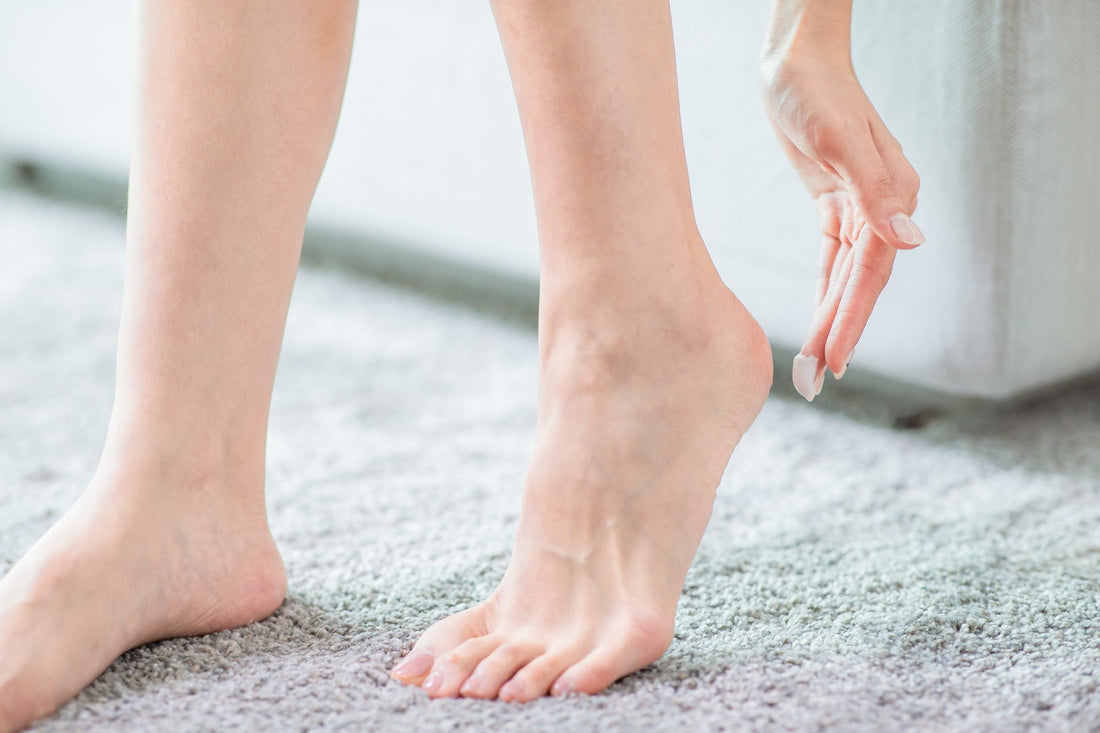If you’ve had corns or calluses before, you’ll likely remember how uncomfortable they can be and how much of an impact that discomfort can have on your day-to-day life. Below, we explore six techniques you can use to keep your feet healthy and avoid corns or calluses returning.
How to prevent corns
You’ll be glad to know that the key to preventing the return of corns and calluses is having a good foot care routine – which can also help to protect your feet against other foot health conditions.
Remember, if you have diabetes, circulation problems or heart disease, it’s best to speak to your GP or podiatrist about what the best course of action is to keep your feet healthy. This is because these conditions can cause foot issues to be more serious than they usually are for the wider public.
So, what does a good foot care routine look like?
Wear thick socks
One of the biggest causes of corns and calluses is pressure on the affected areas of your foot. You might find that wearing thicker socks helps to alleviate and spread some of that pressure, as well as providing a physical barrier around your feet to protect them. This can also help to reduce your risk of conditions caused by friction, such as blisters.
Wear wide, comfortable shoes
Many of us wear slippers or shoes for the majority of our waking hours, which means they can have a big impact on the health of our feet. Because of this, it’s vital to ensure that your footwear is comfortably sized for your feet. Don’t be afraid to try wide sizes if you’re struggling to find the right fit.
Remember, new shoes can often feel a bit uncomfortable if they haven’t been broken in yet. However, if you’ve been wearing them around the house for short periods of time over a week or so and you’re not seeing any signs of improvement, that could mean there’s a bigger problem at play and you need to try a different pair.
Top tip! Make sure you’re wearing the right kind of socks when you try on new shoes. If you’d usually wear thick socks with your work shoes, for instance, wearing thin socks or tights when you try them on for the first time can lead you to pick the wrong size by accident.
Use the right insole
Sometimes, the problem doesn’t lie in the size or shape of the shoe, but in its foot bed. This is the surface on which your foot lies inside the shoe. They’re made to a standard, but not everyone’s feet are the same, so it’s natural that some people might need a little extra cushioning or support in the form of an insole.
Better still, why not solve two problems at once and try our pressure-relieving insole? These handy insoles can cushion your feet while also relieving pressure on areas where you’re likely to get corns or have previously experienced corns
Soak your feet in warm water
A large part of caring for your feet comes in what you do after you take off your shoes for the day. Soaking your feet in warm water (such as during a bath or shower) will help to soften any hard skin that’s building up so it can be dealt with before it forms a corn or callus.
You don’t have to do this every day, but try to soak your feet at least once or twice a week before using a pumice stone, so you can stay on top of things. The longer you leave hard skin, the more likely it is that a corn or callus will develop.
After your soak, make sure to pat your feet dry thoroughly. Leaving the feet damp can lead to the perfect conditions for fungus to grow, which may lead to conditions such as athlete’s foot or fungal toenails. Hot water can shed the skin of its natural oils, so once your feet are dry, apply moisturiser to your feet to prevent the skin from drying out.
Use a pumice stone
Once that hard skin has been softened by warm water, you can use a pumice stone or foot file to remove it. Gently scrub the area to slough away the hard skin until none remains. Some people like to rinse their feet off afterwards to make sure all the hardened skin is removed. If you do this, make sure to dry your feet thoroughly again.
Moisturise the skin
The last step is to use a moisturiser or urea foot cream to keep the skin of your feet well hydrated. This helps to ensure the skin is soft and supple, as well as reducing your risk of dry skin conditions such as cracked heels. A urea cream is a good choice if you have corns or calluses, as it breaks down keratin protein in the outer layers of the skin, helping to prevent hard skin build-up,
When moisturising your feet, stick to massaging the cream into the dorsal region (top) of your foot, the heel and ankle, and the sole. Don’t moisturise between your toes, as this is an area that is particularly vulnerable to conditions like athlete’s foot if it gets too moist. If using a urea foot cream, it is best to keep application to the soles of your feet, and apply extra focus to any areas that you are prone to dry skin, corns or calluses.

